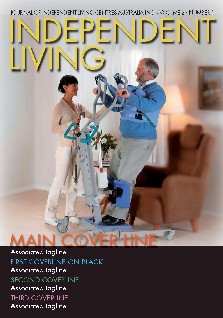
Publications
Independent LivingVolume 23 No 1
published in March 2007
Featured Articles
Fun and Games - AT for recreational activities
Recreation and play are essential factors in a healthy and happy lifestyle. Participating in recreation also assists a person to establish their own hobbies, passions and identity. Surveys conducted in 2003-2005 by the Rehabilitation Engineering Research Centre on Recreational Technologies (Rec-Tech) in Illinois, USA showed that awareness about such technology is low. Overall, people who were aware of recreation equipment and technology were more likely to participate in activities.Although this study was based in the United States, it can be assumed that findings would be similar for the Australian population. The results demonstrate a clear need to increase awareness of the technology available for many popular recreational activities, so that more people can participate.
Easy Riser - stand up hoists
Stand up hoists are more efficient than mobile hoists when transferring from one seated position to another. Here is an update on the latest models.The adoption of a 'No Lift Policy' based on occupational health and safety requirements, has encouraged greater use of hoists, especially in institutional settings. Stand up hoists, also referred to as standing hoists, are a time efficient alternative to conventional mobile hoists when transferring a person from one seated position to another, such as from a wheelchair to a mobile shower chair or commode.
Stand up hoists, however, have limitations on the lifts they can perform compared to mobile hoists. They cannot be used to lift a person from the floor or from a lying position on the bed. This needs to be considered when prescribing a hoist for a person with a degenerative condition.
** A comparision chart on twelve stand up hoists for easy reference is included in this issue.
Sit Right Here - seating for children
Children require appropriate seating to carry out their daily activities from an early age. When selecting a chair for use at home, pre-school or school, it is important to consider a child’s current stage of development and how the features of a chair can promote and stimulate multiple aspects of their physical, social and cognitive development. Ideally, children should be provided with opportunities to sit in various postures throughout the day. The seating must be selected to suit the needs of the child, carers and the task at hand.There are many chairs and seating products to choose from so careful comparison and analysis of features is essential. Some chairs are designed to meet a particular need for use in one situation only, whereas others offer greater flexibility and can be used to support a child during various activities.
